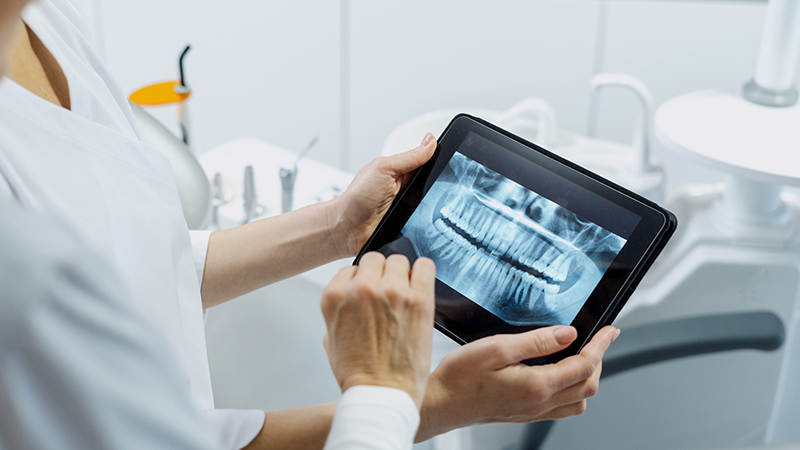Dental X-Rays In Calgary, AB
A dental radiograph (x-ray) is an essential, preventative, diagnostic tool that provides crucial information that is not visible during a regular dental examination. Dental hygienists and dentists use this information to detect hidden dental abnormalities and develop accurate treatment plans. It is possible for problem areas to go undetected without x-rays.

The following may be revealed by dental x-rays:
- Cysts or abscesses.
- Loss of bone.
- Tumors that are cancerous and non-cancerous.
- Teeth decay.
- Abnormal development.
- Poorly positioned teeth and roots.
- A problem inside a tooth or below the gum line.
You can save time, money, unnecessary discomfort, and your teeth by detecting and treating dental problems early.
How safe are dental x-rays?
Radiation is a natural part of our environment that we are all exposed to. The amount of radiation exposure from a full mouth series of x-rays is equal to the amount a person receives in a single day from natural sources. Dental x-rays produce a low level of radiation and are considered safe. Dentists take necessary precautions to limit the patient’s exposure to radiation when taking dental x-rays. These precautions include using lead apron shields to protect the body and using modern, fast film that cuts down the exposure time of each x-ray.
How often should dental x-rays be taken?
The need for dental x-rays depends on each patient’s individual dental health needs. Your dentist and dental hygienist will recommend necessary x-rays based on the review of your medical and dental history, dental exam, signs and symptoms, age consideration, and risk for disease.
A full mouth series of dental x-rays is recommended for new patients. A full series is usually good for three to five years. Bite-wing x-rays (x-rays of top and bottom teeth biting together) are taken at recall (check-up) visits and are recommended once or twice a year to detect new dental problems.